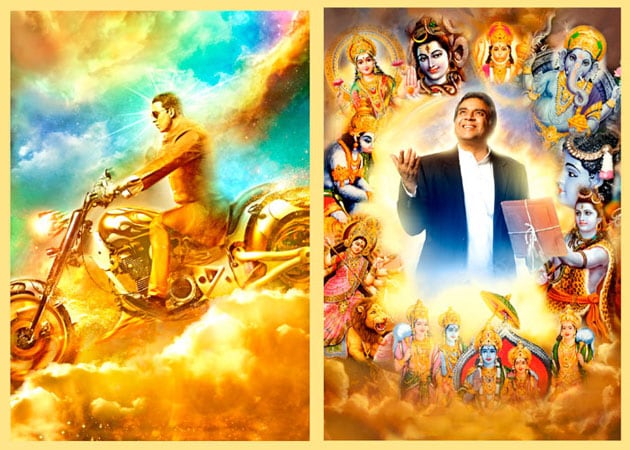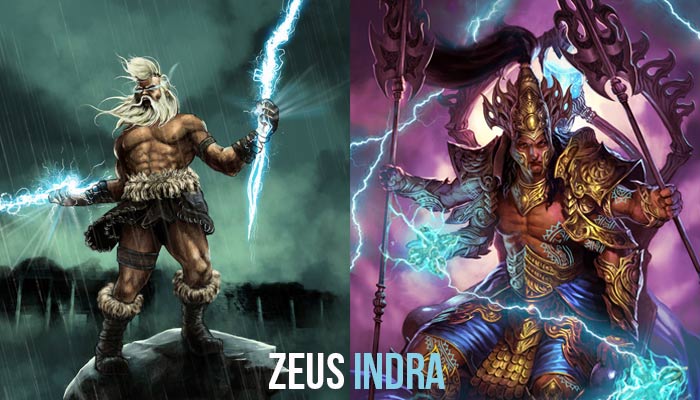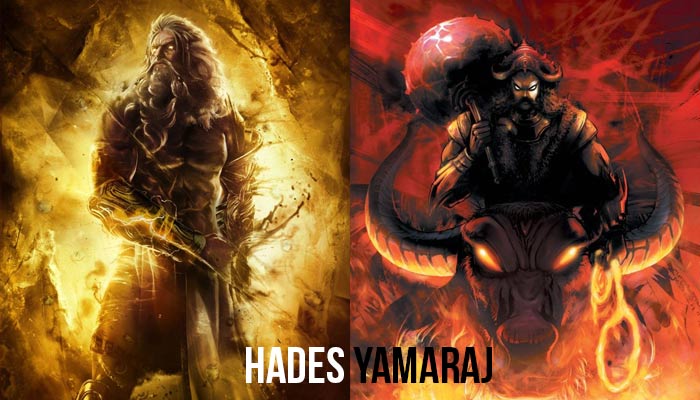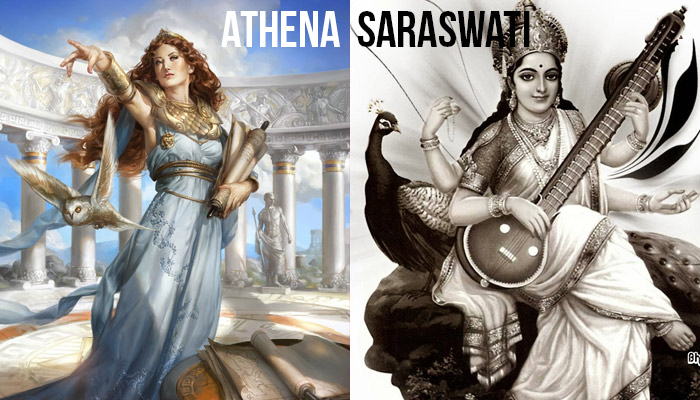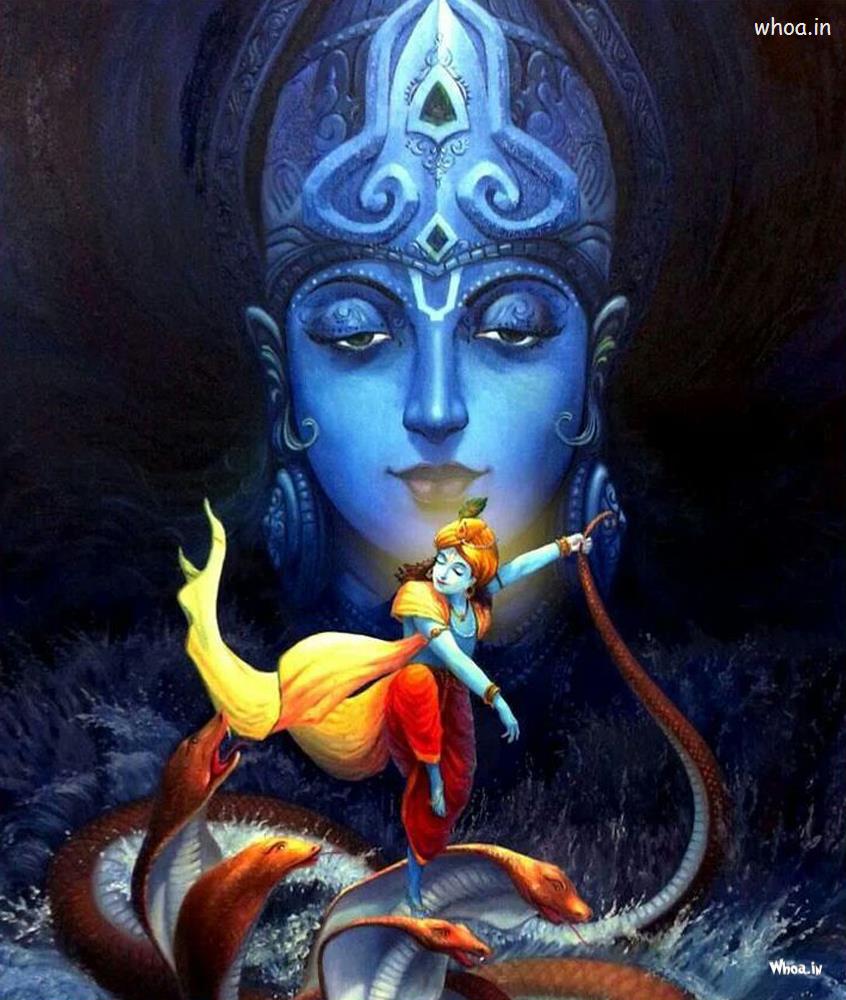As we go ahead to study mythology as a subject we discover that similar to the Indian there are various other mythologies similar to the former across the world. The various religions constitute this fact. Moreover if we give a deep thought to this and assume that god is one and all religions are inter-related, so we find that these mythologies also have something to say in common and may be they are the same stories written or told differently.
 |
| Mythologies of World |
Comparitive Mythology is one the courses that is oriented towards finding the common factors between mythologies to prove that societies or religions have originated from same ancestors. In this we are going to compare two such mythologies i.e Indian and Greek Mythology.
The Great Connection
The Vedic period described in Indian mythology basically started with the aryans entering into India. They brought customs and traditions, including the four vedas (Rig Veda , Sama Veda , Yajur Veda , Atharva Veda). This interference brought up great change and people in India started to believe in the traditions and rituals that were shown in the four vedas. The Rig Veda begins by both acknowledging and addressing all the gods, or Greek pantheon (pantheon is a group of people generally from a single religion) – that they are all great, that they are praiseworthy, and that they are protectors and providers (8.30).
 |
| The Connection {Courtesy: Epified} |
The pantheon as a whole is significantly diverse, in all ways. Perhaps this diversity was best represented by the triad existence between Brahma, Vishnu, and Shiva as the Three Faces of God's Masculine Form. This initial “diversity” marking the triad became a major diversity marked by the 330 million Faces of God that celestially deduce from this initial triadic Principle (“Gods of India”). Although there were certainly not such a number of Greek deities, but definitely are remarkably similar ones – despite the differing culture and location.
Of course, there looms the possibility of a common civilizational ancestor between the two cultures.
Regardless of this possibility, the Greek pantheon relates to the Hindu pantheon first in that it is a pantheon, and second in that this pantheon manifests itself in the form of stories and myths passed down, a family tree of gods and goddesses, and the celestial feel accompanying the Olympian gods, titans, heroes, myths, creatures, and other gods (“Greek Mythology”). Perhaps both traditions honour the same supposed forces, except use different names and deities to represent them.
Indra and Zeus
Indra is king of the
gods and heavens. One of his trademarks is the “Vaijra” or lightning bolt, representing immense power and influence. He is “yellow” in appearance because of his drinking Soma , an especially potent intoxicating drink of which “yellowness” is not only predicative but also rather symbolic. Aside from color,
Indra is associated with rain, wind, and storms. He performs “heroic deeds” (Rig Veda 139), but he also does things to the contrary, such as chastising his own son and having bad relations with family in general (10.28). Nonetheless, Indra protects the gods with his power of thought and, in general or even in “essence,” is characterised significantly as power (2.12).
Zeus, too, is a weather god. The name “Zeus” relates to the Greek word dios for “bright.” If being bright means having authority, then the name for this god holds true since he is indeed King of the Olympians and master of justice and order . He is “affirmed with thunder and lightning,” the lightning bolt as his primary weapon. Also like Indra, Zeus does not have optimal familial relations, having to overthrow his father, Cronus, and kill several other family members. The relation between these two deities, then, should appear simple. Both symbolize, and are, power and authority, above all. The next strong connection to identify is that between Yama and Hades.
Yama and Hades
Yama is the lord of death, guardian of the “south” or “abode of the dead”. He lives in an underworld palace called “Kalichi,” and follows predestination while being able to bring death to anyone at will. Yama chooses to follow predestination, and dharma, and not to go out of sync with it. The name “Yama” itself means
restrainer, restraining humans from being corporeally immortal. The Rig Veda states that he is the first son of the sun and the first mortal man (10.10). Despite the cosmic role that he plays as guardian of the south, he is not immoral because of his strict adherence to dharma and order. For instance, Yama refuses to mate with his sister, Yami, based upon moral principle, despite her insistence that doing so is necessary for the sake of procreation (10.15-22). Interestingly, he is associated with the planet Pluto, which is the alternative name of Yama's Greek counterpart, Hades.
Hades is king of the underworld, also known as “Pluton” or “king of the shades” (Atsma). He is brothers with Zeus and Poseidon, who together had to reconcile which one of them would rule which world, following the death of Cronus. With his power, Zeus took the sky and gave Poseidon the sea, which left Hades with the underworld. Because of his role as king of this realm, he is very rich, having access to all the world's precious minerals. Along with this wealth, Hades is greedy and desires to have more subjects, more souls to claim. “The Rich One,” as he is also known, is liked least amongst all the Greek deities because of his negativity. Although Hades may not seem nearly as similar to Yama as Zeus to Indra, definitely relate in their overseeing the underworld or realm of death potentially do not relate in that Indra exemplifies “Death” in sync with dharma, while Hades exemplifies Death out of sync with dharma (or in language of that context, “virtue”). Now consider the strong connection between Saraswati and Athena.
Saraswati and Athena
Saraswati is one of four aspects comprising the
Divine Mother, which complements the three aspects comprising the Divine Father that is Brahma-Vishnu-Shiva. She is a “cosmic musician,” embodying perfection, knowledge, and wisdom. Saraswati is also a hero to and for the people, demonstrating both courage and wit, in addition to rhyme and reason (“Maha Saraswati”). King Navaratha praises her for being pure and wise, for being the “womb of the world, the excellent Yogini, the supreme spouse of the
Golden Embryo, the third-eyed, moon-topped goddess!”.
Athena relates to Saraswati in the significance behind her symbolization as or avatar of the owl – watchful and wise. Athena, in short, is very intelligent. She is heroic in character since she is the goddess of war. For instance, she actively participates in the Trojan War, by virtue of this relating to her duty as a deity (“Athene”). Both goddesses strongly relate in that they represent the feminine empowered by wisdom, courage, and heroism. Perhaps both of these deities, and the “essence” that they share, offer a perfect model for any feminist. Regardless of the latter speculation, there remains the strong connection between both figures. Let us continue by examining the subtle link between Shiva and Ares.
Shiva and Ares
Shiva is perhaps one of the more complex Hindu deities. His name means “auspicious,” though his persona is just as ambiguous in flavor as it is auspicious. An example of such ambiguity is that Shiva is both “self-controlled and celibate, while at the same time a lover of his spouse.” The god is supremely powerful, but he is not distinguished most because of his power, but because of his role as the Destroyer, including both positive and negative forms of destruction. Shiva's power to destroy comes from his energy that is simultaneously his wife, Shakti – which is an “explosive” kind of energy. Symbolically, he is associated with the tiger, as he sits on its skin. This animal, along with the elephant, shows his ability to “control and transform animal nature”. Alongside this ability are Shiva's main weapons, his bow and club, as well as serpent.
 |
| Shiva |
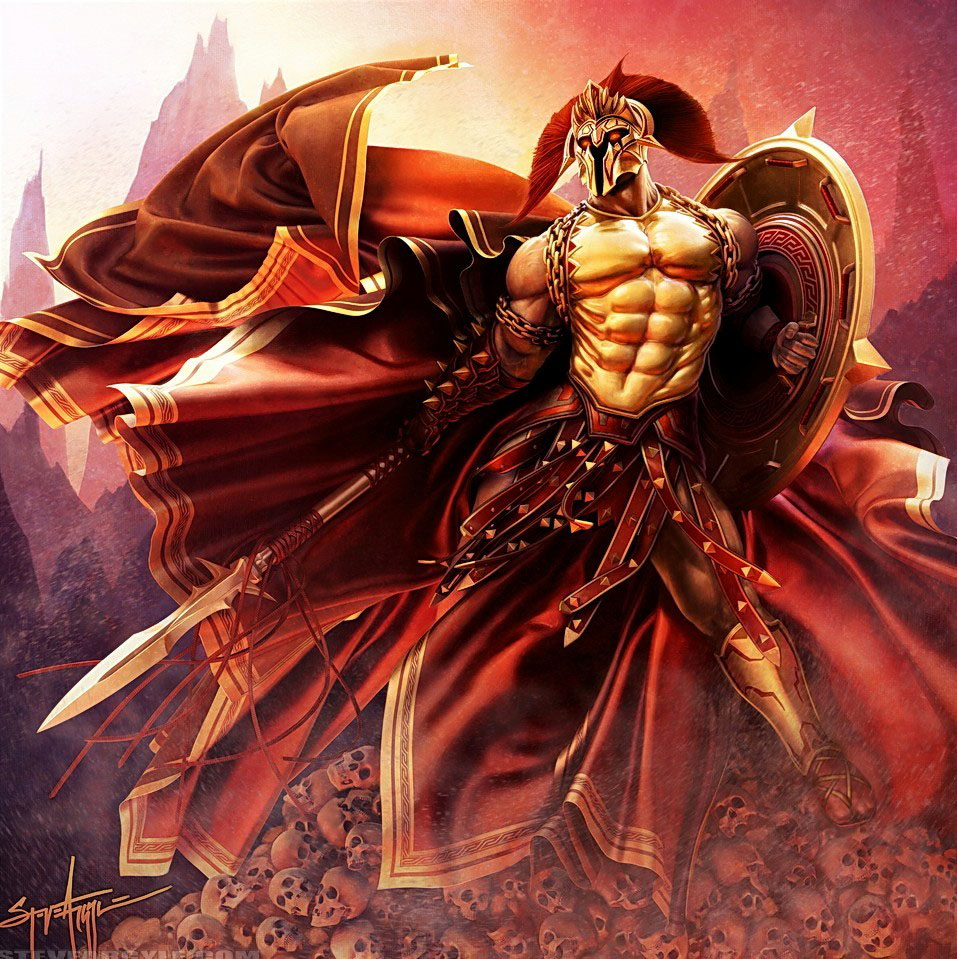 |
| Ares |
The deity is also associated frequently with Agni, the fire god, because Shiva rides on a bull, and Agni is often symbolized as the bull. This association makes sense because of what fire does – it consumes, it destroys in a fierce, passionate manner. Like fire, Shiva destroys everything that needs to be destroyed, with the guiding aim of Brahma creating something new in place (Das). Shiva's symbolism as fire is also suggestive of his relationship to Ares, the Greek god of war and action, “
battlelust and courage,” “bold force and strength” (“Ares”). Fire symbolizes drive, and it definitely can symbolize “battlelust,” “lust” in general, or “passion.” Shiva indeed contains such passion, described as loving and making love to Shakti for days sometimes; in fact,
tantric sexual doctrine emphasizes “Shiva-Shakti” cultivation. I will admit that the connection between Shiva and Ares is not as strong as ones already discussed, but the symbolic relation between war, fire, and destruction is still quite noteworthy. Let us now consider the fifth and final strong connection between these two traditions, before analyzing the significance. This pair involves Lakshmi and Hera.
Lakshmi and Hera
Lakshmi is the
Hindu goddess of wealth and prosperity. Along with Saraswati, she is one of the Four Faces of the Divine Mother. The name stems from “laksme,” which means “goal.” Lakshmi represents the goal of life, enjoying wealth and prosperity that results not from attachment to such, but from dedication to dharma.
Lakshmi is indeed worthy of being spouse to the perfect and righteous Vishnu. The number four is significant to this goddess for a number of reasons, one of which being her four arms (“Goddess Lakshmi”). Perhaps this number is rather fitting, at least relative to the perspective of numerology, in which four is the most “natural” number. If “natural” denotes the manifest, material universe, then the number is doubtless fitting for this deity.
 |
| Laxmi |
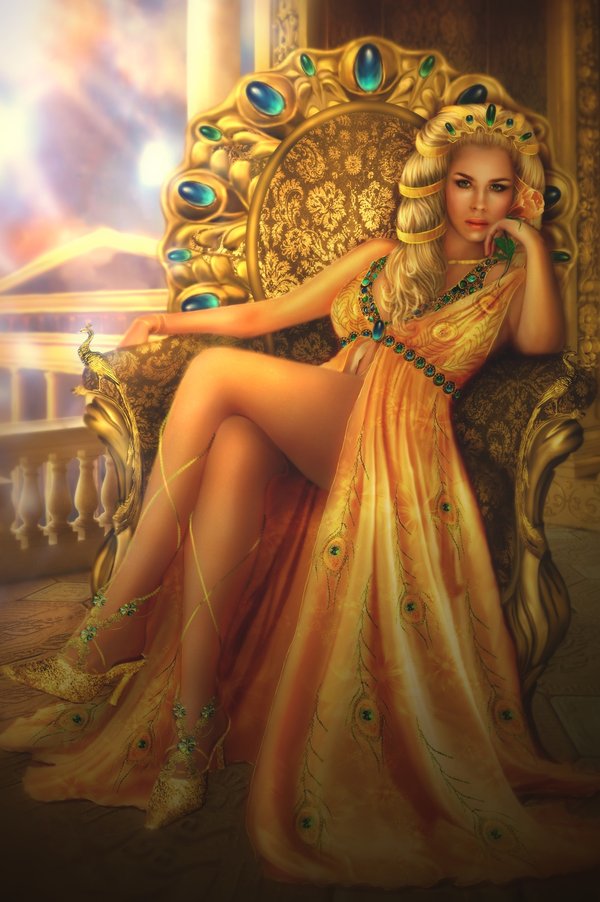 |
| Hera |
Lakshmi represents the material or phenomenal side of existence, which complements the mystical or spiritual side . She “
represents the beautiful and bountiful aspect of nature”. Gold coins fall from her hands everywhere she walks, blessing all with wealth (“Lakshmi”).
Hera immediately relates to Lakshmi in that she is married to Zeus, and together they rule the gods and goddesses. She holds a position of privilege and power, affluence and fortune. She also represents women and marriage (“Hera”). These two aspects of Hera connect her with Lakshmi her wealth and fortune, and her divine femininity.
Thanks for reading....
If you have any other queries or facts regarding this topic...
Please put them in the comment box below....
Please Comment, Share and Follow...
 Devotion and Bhakti in Indian mythology is not simple but very complex. It is like an emotional bridge that connects the devotee to the deity and makes him thinks and chant deity name all the time.This connection that makes the devotee full of deity's can be known as Bhakti or Devotion. This takes many forms such as devotion of the friend (sakha bhaav), of the lover (madhurya bhaav), of the parent (vastsalya bhaav), of the servant (daasya bhaav). The most peculiar form of devotion is called reverse devotion, or devotion of the enemy. This is viparit-bhakti.
Devotion and Bhakti in Indian mythology is not simple but very complex. It is like an emotional bridge that connects the devotee to the deity and makes him thinks and chant deity name all the time.This connection that makes the devotee full of deity's can be known as Bhakti or Devotion. This takes many forms such as devotion of the friend (sakha bhaav), of the lover (madhurya bhaav), of the parent (vastsalya bhaav), of the servant (daasya bhaav). The most peculiar form of devotion is called reverse devotion, or devotion of the enemy. This is viparit-bhakti.